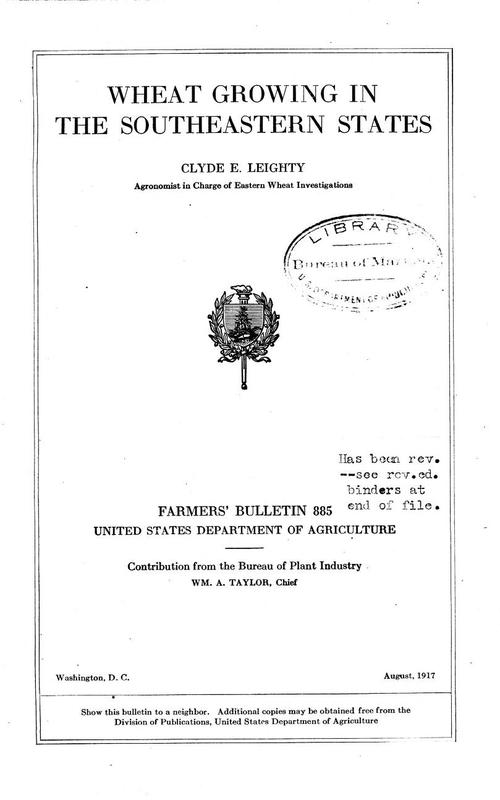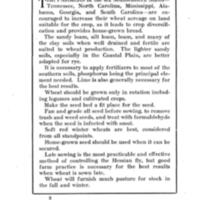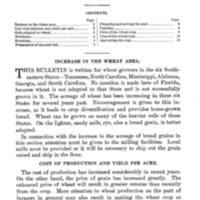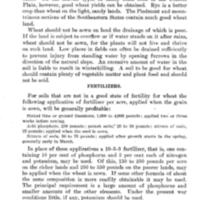Wheat Growing in the Southeastern States
Creator
Date
1917
Excerpt
THE FARMERS in the six Southeastern States- Tennessee, North Carolina, Mississippi, Alabama, Georgia, and South Carolina are encouraged to increase their wheat acreage on land suitable for the crop, as it leads to crop diversification and provides home-grown bread.
The sandy loam, silt loam, loam, and many of the clay soils when well drained and fertile are suited to wheat production. The lighter sandy soils, especially in the Coastal Plain, are better adapted for rye.
It is necessary to apply fertilizers to most of the southern soils, phosphorus being the principal element needed. Lime is also generally necessary for the best results.
Wheat should be grown only in rotation including legumes and cultivated crops. Make the seed bed a fit place for the seed. Fan and grade all seed before sowing, to remove trash and weed seeds, and treat with formaldehyde when the seed is infected with smut.
Soft red winter wheats are best, considered from all standpoints.
Home-grown seed should be used when it can be secured.
Late sowing is the most practicable and effective method of controlling the Hessian fly, but good farm practice is necessary for the best results when wheat is sown late.
Wheat will furnish much pasture for stock in the fall and winter.
The sandy loam, silt loam, loam, and many of the clay soils when well drained and fertile are suited to wheat production. The lighter sandy soils, especially in the Coastal Plain, are better adapted for rye.
It is necessary to apply fertilizers to most of the southern soils, phosphorus being the principal element needed. Lime is also generally necessary for the best results.
Wheat should be grown only in rotation including legumes and cultivated crops. Make the seed bed a fit place for the seed. Fan and grade all seed before sowing, to remove trash and weed seeds, and treat with formaldehyde when the seed is infected with smut.
Soft red winter wheats are best, considered from all standpoints.
Home-grown seed should be used when it can be secured.
Late sowing is the most practicable and effective method of controlling the Hessian fly, but good farm practice is necessary for the best results when wheat is sown late.
Wheat will furnish much pasture for stock in the fall and winter.
Title
Wheat Growing in the Southeastern States
File(s)
Wheat Growing in the Southeastern States Cover.jpg
(image/jpeg)
Wheat Growing in the Southeastern States Summary.jpg
(image/jpeg)
Wheat Growing in the Southeastern States 1.jpg
(image/jpeg)
Wheat Growing in the Southeastern States 2.jpg
(image/jpeg)
 An official website of the United States government.
An official website of the United States government.





